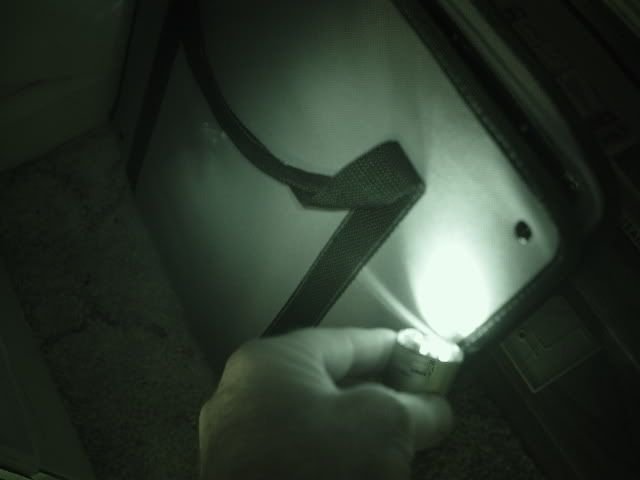He couldn’t vote for nobama, he’s Canadian. He probably gets all his info from that genius cmi LOL Kevin.![]() LOL
LOL
You are correct but I bet he wanted to ![]()
Are you sure?
A 35mm camera can take IR images. What is the difference? They have glass lenses.
How does your truck’s backup camera light things up without visible light?
Why can Scott’s camera see IR through light bulb glass?
Are you sure digital cameras can not record in the IR spectrum?
Just Askin! 
Yikes if that was true we wouldn’t be “special” anymore.
Maybe we can call upon our local IR Trainer to explain this…
I don’t want him thinking I’m trying to elbow in on his IR Teaching. :shock:
I don’t know about that…!
sure a 35mm camera can take ir phots with I.R. sensitive film
(I.R. sensitive film)
I thought you were indicating that IR does not go through glass lenses.
It’s not nothing, it costs $1.
Whose Obama?
wish I could say that!
Not me but it doesn’t work on window glass.
do they have a spectrum app also :shock:
Sorry to disagree with you Mr. Larson. Infrared cameras can see just fine through window glass as long as you are using the proper wavelength camera.
John,
I (and others) was joking with my previous reply as I initially thought you were joking.
While I’m sure outwardly this app does look impressive, it is nothing more than a cheap parlor trick converting a visual light image into some formulated colors which look strikingly similar to a thermal image… nothing more. You can achieve the same effect from any number of free photo editing software available for download across the web.
Ask your friends to try this app in a completely dark setting and let us know the results. Without visible light, the app will fail (unlike a true infrared thermal imaging camera).
While prices have come down on many thermal imagers, they have yet to fall to the cost of an i-phone + $0.99
Now if you are joking with us… then this is pretty darn funny! ![]()
why Bill Warner I’m :shock::shock::shock::shock:
If you are going to o all technical please explain what wave lengths.
Now you’ve done it.
Within a week, some enterprising group will discover a source of extra income by convincing the world of the need for three levels of Ipad certification.
Graduates will call themselves “Ipadographers” and will be warning consumers not to accept email from Ipad operators who are not “certified”.
It has happened before with other tools.![]()
Okay, have we had enough fun yet?
Time to shed some light on the subject (infrared light that is).
I thought our local thermography trainer would jump in on this one, but I guess I will risk being accused of trying to teach his classes again!
Digital cameras can “see” in the infrared spectrum.
Actually, they have an IR filter to prevent it from happening because it will alter the camera’s color tuning because there is no color in the infrared spectrum. The infrared light will wash out parts of the photograph if allowed to remain.
The difference between our inspection cameras and digital cameras that can see IR, is that our inspection cameras see radiated infrared energy and digital cameras see reflected infrared light. This is because of the frequency at which the cameras are designed to receive.
The pictures on the iPad are in fact infrared, however they are reflected infrared from the infrared range of the electromagnetic spectrum of the sun’s light or from a manufactured infrared source on the camera.
The picture above is a security camera with infrared light emitting diodes. It was taken with a Sony DSC-F707 camera that has the ability of photographing in the infrared range by removing the infrared filter when that mode is selected (you can hear the filter move out of the way). Its purpose is to allow focusing and composition of the photograph in the dark. A digital picture can then be taken or it can be taken in the infrared spectrum.
This iPad thing is nothing new. This Sony camera was available in the 90’s.
As a matter of fact you can photograph moisture anomalies with any digital camera if you use software to enhance the photograph by moving it into the infrared spectrum as far as it will go.
You may notice that you can see moisture in a concrete foundation from within the crawlspace in a picture taken with a digital camera better than you can with your flashlight. The digital camera can be tuned and bring out these moisture conditions with an even higher contrast if desired.
The important part of this application is that you must slightly underexpose the frame. Overexposure does not record properly in the infrared range.
There, now you all can go out and do thermal infrared inspections! 
And no, a thermal imaging camera cannot see the infrared light in the above photograph. It is outside the frequency range of the camera. Neither can your eyes.
Only your digital camera can see it.
No, we haven’t. Keep’em coming.
Yup, a blower door certification will make you and instant “certified energy auditor”. Thanks Jim.![]()
